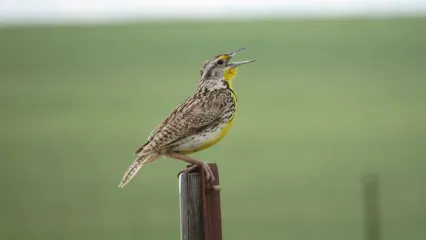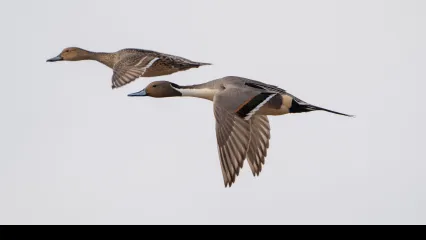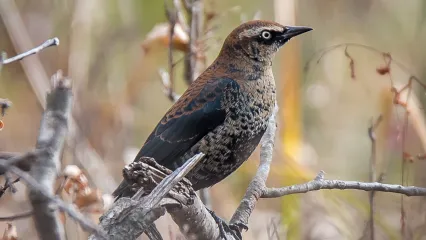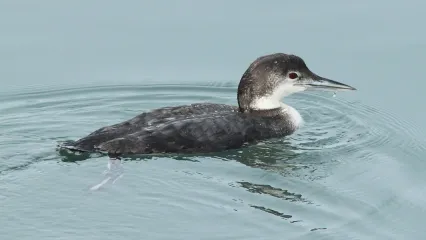
Description
This bird is the size of a robin, and can be readily identified by the yellow breast with a black “v” at the neck. It has blackish head stripes, a sharply pointed bill, and a short tail with white outer tail feathers. The winter plumage is somewhat paler. The most reliable way to distinguish between eastern and western meadowlark is by song, but singing is uncommon in winter. These birds may also be confused with dickcissels, but dickcissels are smaller in size, have a different call and do not occur in Oklahoma during the winter.
Size
Approximately 6.3 to 10.2 inches in length. Wingspan of 16.1 inches.
Habitat
Meadowlarks can be found in grassy fields and pastures, prairies, croplands, weedy fields, grassy roadsides and in old orchards. Western meadowlarks can be found nearly statewide, but fewer sightings are recorded in eastern Oklahoma.
Life Cycle
At feeders, western meadowlarks eat cracked corn, millet and black-oil sunflower seeds. Away from feeders they snatch grasshoppers, crickets, beetles and spiders from the ground and off vegetation. Birds will also forage on seeds in the wild.


